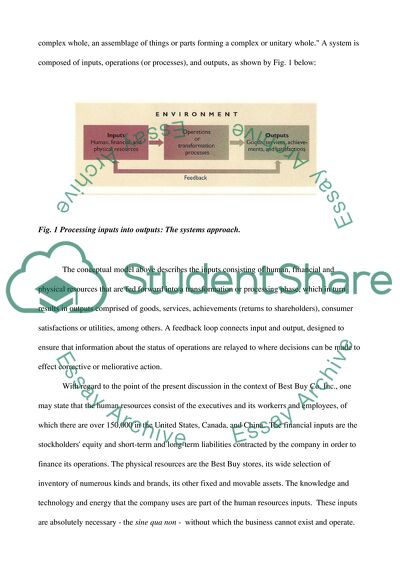
- Home
- Free Samples
- Premium Essays
- Editing Services
- Extra Tools
- Essay Writing Help
- About Us
- Studentshare
- Subjects
- Miscellaneous
- Business Discussions
Business Discussions - Essay Example

- Subject: Miscellaneous
- Type: Essay
- Level: Ph.D.
- Pages: 4 (1000 words)
- Downloads: 0
- Author: sophiebednar
Extract of sample "Business Discussions"
vironment refers to external factors that affect the business entity directly and with which it interacts as it carries on its operations: the customers, competitors, suppliers, regulatory agencies, and special interest groups. The internal environment includes factors over which management has considerable control, such as organizational culture, organizational strucuture and reporting relastionships, human resources, policies and technology (Hitt, et al, 1999). Managers have discovered that the external environment (the general and task environments) affect every decision that they make.
What was needed was an integration of the universal managerial functions with corporate planning through what is called a systems approach. According to Johnson et al (1995, cited in Mosley et al, 1997), a system is "an organized or complex whole, an assemblage of things or parts forming a complex or unitary whole." A system is composed of inputs, operations (or processes), and outputs, as shown by Fig. 1 below: The conceptual model above describes the inputs consisting of human, financial and physical resources that are fed forward into a transformation or processing phase, which in turn results in outputs comprised of goods, services, achievements (returns to shareholders), consumer satisfactions or utilities, among others.
A feedback loop connects input and output, designed to ensure that information about the status of operations are relayed to where decisions can be made to effect corrective or meliorative action. With regard to the point of the present discussion in the context of Best Buy Co. Inc., one may state that the human resources consist of the executives and its workerrs and employees, of which there are over 150,000 in the United States, Canada, and China. The financial inputs are the stockholders equity and short-term and long-term liabilities contracted by the company in order to finance its operations.
The physical resources are the Best Buy stores, its
...Download file to see next pages Read MoreCHECK THESE SAMPLES OF Business Discussions
The challenges of doing business in China and Vietnam
Workplace Ethnography
Are there Cultural differences in Chinese and American Negotiations
Business Management Techniques
Making Strategy: The Journey of Strategic Management
Strategies in Multinational Development
Business Negotiations
Intriguing Popularity of the Valley Mall

- TERMS & CONDITIONS
- PRIVACY POLICY
- COOKIES POLICY